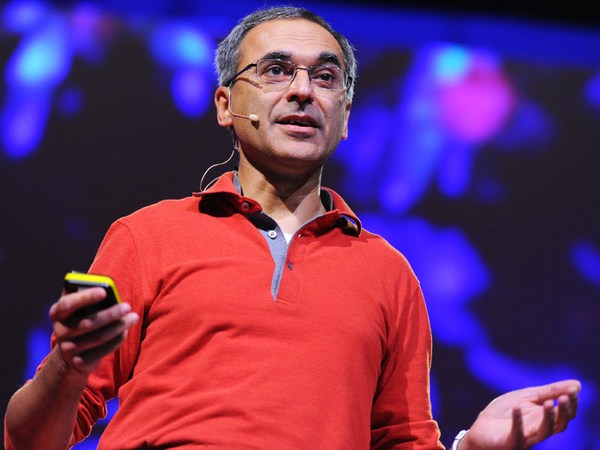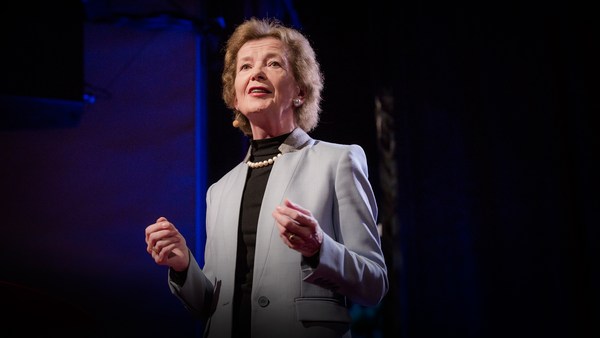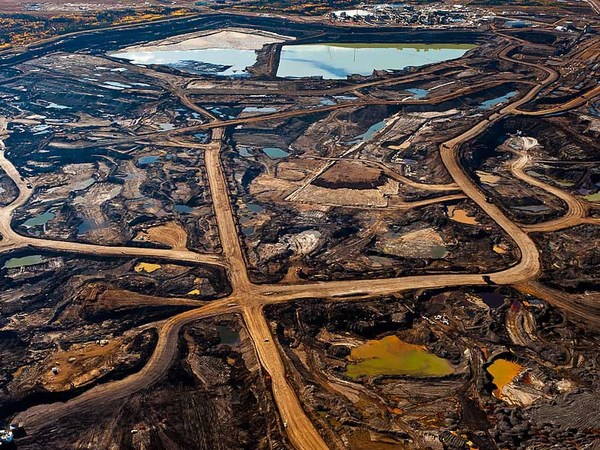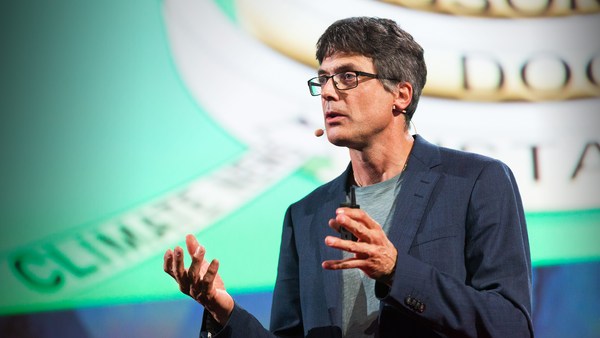Over our lifetimes, we've all contributed to climate change. Actions, choices and behaviors will have led to an increase in greenhouse gas emissions. And I think that that's quite a powerful thought. But it does have the potential to make us feel guilty when we think about decisions we might have made around where to travel to, how often and how, about the energy that we choose to use in our homes or in our workplaces, or quite simply the lifestyles that we lead and enjoy. But we can also turn that thought on its head, and think that if we've had such a profound but a negative impact on our climate already, then we have an opportunity to influence the amount of future climate change that we will need to adapt to.
So we have a choice. We can either choose to start to take climate change seriously, and significantly cut and mitigate our greenhouse gas emissions, and then we will have to adapt to less of the climate change impacts in future. Alternatively, we can continue to really ignore the climate change problem. But if we do that, we are also choosing to adapt to very much more powerful climate impacts in future. And not only that. As people who live in countries with high per capita emissions, we're making that choice on behalf of others as well. But the choice that we don't have is a no climate change future.
Over the last two decades, our government negotiators and policymakers have been coming together to discuss climate change, and they've been focused on avoiding a two-degree centigrade warming above pre-industrial levels. That's the temperature that's associated with dangerous impacts across a range of different indicators, to humans and to the environment. So two degrees centigrade constitutes dangerous climate change.
But dangerous climate change can be subjective. So if we think about an extreme weather event that might happen in some part of the world, and if that happens in a part of the world where there is good infrastructure, where there are people that are well-insured and so on, then that impact can be disruptive. It can cause upset, it could cause cost. It could even cause some deaths. But if that exact same weather event happens in a part of the world where there is poor infrastructure, or where people are not well-insured, or they're not having good support networks, then that same climate change impact could be devastating. It could cause a significant loss of home, but it could also cause significant amounts of death.
So this is a graph of the CO2 emissions at the left-hand side from fossil fuel and industry, and time from before the Industrial Revolution out towards the present day. And what's immediately striking about this is that emissions have been growing exponentially. If we focus in on a shorter period of time from 1950, we have established in 1988 the Intergovernmental Panel on Climate Change, the Rio Earth Summit in 1992, then rolling on a few years, in 2009 we had the Copenhagen Accord, where it established avoiding a two-degree temperature rise in keeping with the science and on the basis of equity. And then in 2012, we had the Rio+20 event. And all the way through, during all of these meetings and many others as well, emissions have continued to rise. And if we focus on our historical emission trend in recent years, and we put that together with our understanding of the direction of travel in our global economy, then we are much more on track for a four-degree centigrade global warming than we are for the two-degree centigrade.
Now, let's just pause for a moment and think about this four-degree global average temperature. Most of our planet is actually made up of the sea. Now, because the sea has a greater thermal inertia than the land, the average temperatures over land are actually going to be higher than they are over the sea. The second thing is that we as human beings don't experience global average temperatures. We experience hot days, cold days, rainy days, especially if you live in Manchester like me.
So now put yourself in a city center. Imagine somewhere in the world: Mumbai, Beijing, New York, London. It's the hottest day that you've ever experienced. There's sun beating down, there's concrete and glass all around you. Now imagine that same day -- but it's six, eight, maybe 10 to 12 degrees warmer on that day during that heat wave. That's the kind of thing we're going to experience under a four-degree global average temperature scenario.
And the problem with these extremes, and not just the temperature extremes, but also the extremes in terms of storms and other climate impacts, is our infrastructure is just not set up to deal with these sorts of events. So our roads and our rail networks have been designed to last for a long time and withstand only certain amounts of impacts in different parts of the world. And this is going to be extremely challenged. Our power stations are expected to be cooled by water to a certain temperature to remain effective and resilient. And our buildings are designed to be comfortable within a particular temperature range. And this is all going to be significantly challenged under a four-degree-type scenario. Our infrastructure has not been designed to cope with this.
So if we go back, also thinking about four degrees, it's not just the direct impacts, but also some indirect impacts. So if we take food security, for example. Maize and wheat yields in some parts of the world are expected to be up to 40 percent lower under a four-degree scenario, rice up to 30 percent lower. This will be absolutely devastating for global food security. So all in all, the kinds of impacts anticipated under this four-degree centigrade scenario are going to be incompatible with global organized living.
So back to our trajectories and our graphs of four degrees and two degrees. Is it reasonable still to focus on the two-degree path? There are quite a lot of my colleagues and other scientists who would say that it's now too late to avoid a two-degree warming. But I would just like to draw on my own research on energy systems, on food systems, aviation and also shipping, just to say that I think there is still a small fighting chance of avoiding this two-degree dangerous climate change. But we really need to get to grips with the numbers to work out how to do it.
So if you focus in on this trajectory and these graphs, the yellow circle there highlights that the departure from the red four-degree pathway to the two-degree green pathway is immediate. And that's because of cumulative emissions, or the carbon budget. So in other words, because of the lights and the projectors that are on in this room right now, the CO2 that is going into our atmosphere as a result of that electricity consumption lasts a very long time. Some of it will be in our atmosphere for a century, maybe much longer. It will accumulate, and greenhouse gases tend to be cumulative. And that tells us something about these trajectories. First of all, it tells us that it's the area under these curves that matter, not where we reach at a particular date in future. And that's important, because it doesn't matter if we come up with some amazing whiz-bang technology to sort out our energy problem on the last day of 2049, just in the nick of time to sort things out. Because in the meantime, emissions will have accumulated. So if we continue on this red, four-degree centigrade scenario pathway, the longer we continue on it, that will need to be made up for in later years to keep the same carbon budget, to keep the same area under the curve, which means that that trajectory, the red one there, becomes steeper. So in other words, if we don't reduce emissions in the short to medium term, then we'll have to make more significant year-on-year emission reductions. We also know that we have to decarbonize our energy system. But if we don't start to cut emissions in the short to medium term, then we will have to do that even sooner. So this poses really big challenges for us.
The other thing it does is tells us something about energy policy. If you live in a part of the world where per capita emissions are already high, it points us towards reducing energy demand. And that's because with all the will in the world, the large-scale engineering infrastructure that we need to roll out rapidly to decarbonize the supply side of our energy system is just simply not going to happen in time. So it doesn't matter whether we choose nuclear power or carbon capture and storage, upscale our biofuel production, or go for a much bigger roll-out of wind turbines and wave turbines. All of that will take time. So because it's the area under the curve that matters, we need to focus on energy efficiency, but also on energy conservation -- in other words, using less energy. And if we do that, that also means that as we continue to roll out the supply-side technology, we will have less of a job to do if we've actually managed to reduce our energy consumption, because we will then need less infrastructure on the supply side.
Another issue that we really need to grapple with is the issue of well-being and equity. There are many parts of the world where the standard of living needs to rise. Bbut with energy systems currently reliant on fossil fuel, as those economies grow so will emissions. And now, if we're all constrained by the same amount of carbon budget, that means that if some parts of the world's emissions are needing to rise, then other parts of the world's emissions need to reduce.
So that poses very significant challenges for wealthy nations. Because according to our research, if you're in a country where per capita emissions are really high -- so North America, Europe, Australia -- emissions reductions of the order of 10 percent per year, and starting immediately, will be required for a good chance of avoiding the two-degree target. Let me just put that into context. The economist Nicholas Stern said that emission reductions of more than one percent per year had only ever been associated with economic recession or upheaval. So this poses huge challenges for the issue of economic growth, because if we have our high carbon infrastructure in place, it means that if our economies grow, then so do our emissions. So I'd just like to take a quote from a paper by myself and Kevin Anderson back in 2011 where we said that to avoid the two-degree framing of dangerous climate change, economic growth needs to be exchanged at least temporarily for a period of planned austerity in wealthy nations.
This is a really difficult message to take, because what it suggests is that we really need to do things differently. This is not about just incremental change. This is about doing things differently, about whole system change, and sometimes it's about doing less things. And this applies to all of us, whatever sphere of influence we have. So it could be from writing to our local politician to talking to our boss at work or being the boss at work, or talking with our friends and family, or, quite simply, changing our lifestyles. Because we really need to make significant change. At the moment, we're choosing a four-degree scenario. If we really want to avoid the two-degree scenario, there really is no time like the present to act.
Thank you.
(Applause)
Bruno Giussani: Alice, basically what you're saying, the talk is, unless wealthy nations start cutting 10 percent per year the emissions now, this year, not in 2020 or '25, we are going to go straight to the four-plus-degree scenario. I am wondering what's your take on the cut by 70 percent for 2070.
Alice Bows-Larkin: Yeah, it's just nowhere near enough to avoid two degrees. One of the things that often -- when there are these modeling studies that look at what we need to do, is they tend to hugely overestimate how quickly other countries in the world can start to reduce emissions. So they make kind of heroic assumptions about that. The more we do that, because it's the cumulative emissions, the short-term stuff that really matters. So it does make a huge difference. If a big country like China, for example, continues to grow even for just a few extra years, that will make a big difference to when we need to decarbonize. So I don't think we can even say when it will be, because it all depends on what we have to do in the short term. But I think we've just got huge scope, and we don't pull those levers that allow us to reduce the energy demand, which is a shame.
BG: Alice, thank you for coming to TED and sharing this data.
ABL: Thank you.
(Applause)





